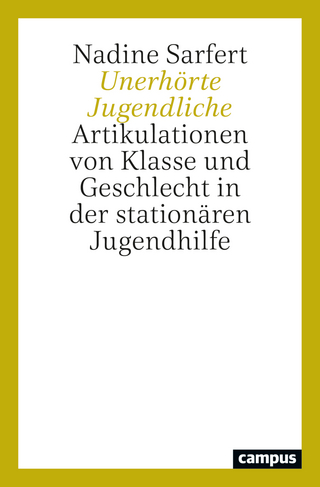
Women, Art, and Architecture in Northern Italy, 1520–1580
Negotiating Power
Seiten
2006
Routledge (Verlag)
978-0-7546-5411-7 (ISBN)
Routledge (Verlag)
978-0-7546-5411-7 (ISBN)
Investigating the gender and material culture, this book provides a fresh dimension to Renaissance patronage studies by considering domestic art as opposed to patronage of the fine arts (painting, sculpture and architecture). It looks at women as collectors of precious material goods, organizers of the modern home, and decorators of its interior.
Expanding interdisciplinary investigations into gender and material culture, Katherine A. McIver here adds a new dimension to Renaissance patronage studies by considering domestic art - the decoration of the domestic interior - as opposed to patronage of the fine arts (painting, sculpture and architecture). Taking a multidimensional approach, McIver looks at women as collectors of precious material goods, as organizers of the early modern home, and as decorators of its interior. By analyzing the inventories of women's possessions, McIver considers the wide range of domestic objects that women owned, such as painted and inlaid chests, painted wall panels, tapestries, fine fabrics for wall and bed hangings, and elaborate jewelry (pendant earrings, brooches, garlands for the hair, necklaces and rings) as well as personal devotional objects. Considering all forms of patronage opportunities open to women, she evaluates their role in commissioning and utilizing works of art and architecture as a means of negotiating power in the court setting, in the process offering fresh insights into their lives, limitations, and the possibilities open to them as patrons. Using her subjects' financial records to track their sources of income and the circumstances under which it was spent, McIver thereby also provides insights into issues of Renaissance women's economic rights and responsibilities. The primary focus on the lives and patronage patterns of three relatively unknown women, Laura Pallavicina-Sanvitale, Giacoma Pallavicina and Camilla Pallavicina, provides a new model for understanding what women bought, displayed, collected and commissioned. By moving beyond the traditional artistic centers of Florence, Venice and Rome, analyzing instead women's artistic patronage in the feudal courts around Parma and Piacenza during the sixteenth century, McIver nuances our understanding of women's position and power both in and out of the home. Carefully integrating extensive archival
Expanding interdisciplinary investigations into gender and material culture, Katherine A. McIver here adds a new dimension to Renaissance patronage studies by considering domestic art - the decoration of the domestic interior - as opposed to patronage of the fine arts (painting, sculpture and architecture). Taking a multidimensional approach, McIver looks at women as collectors of precious material goods, as organizers of the early modern home, and as decorators of its interior. By analyzing the inventories of women's possessions, McIver considers the wide range of domestic objects that women owned, such as painted and inlaid chests, painted wall panels, tapestries, fine fabrics for wall and bed hangings, and elaborate jewelry (pendant earrings, brooches, garlands for the hair, necklaces and rings) as well as personal devotional objects. Considering all forms of patronage opportunities open to women, she evaluates their role in commissioning and utilizing works of art and architecture as a means of negotiating power in the court setting, in the process offering fresh insights into their lives, limitations, and the possibilities open to them as patrons. Using her subjects' financial records to track their sources of income and the circumstances under which it was spent, McIver thereby also provides insights into issues of Renaissance women's economic rights and responsibilities. The primary focus on the lives and patronage patterns of three relatively unknown women, Laura Pallavicina-Sanvitale, Giacoma Pallavicina and Camilla Pallavicina, provides a new model for understanding what women bought, displayed, collected and commissioned. By moving beyond the traditional artistic centers of Florence, Venice and Rome, analyzing instead women's artistic patronage in the feudal courts around Parma and Piacenza during the sixteenth century, McIver nuances our understanding of women's position and power both in and out of the home. Carefully integrating extensive archival
Katherine A. McIver is Associate Professor of Art History at The University of Alabama at Birmingham, USA. She is also the editor of Art and Music in the Early Modern Period: Essays in Honor of Franca Trinchieri Camiz (Ashgate, 2003).
Contents: Introduction; The women: the cast of characters; The Renaissance palazzo as a public voice for women; The Renaissance palazzo interior as a private voice for women; Domestic consumption: listening to women's private voice; Women, the church, and religious foundations; Glossary; Appendices; Bibliography; Index.
| Erscheint lt. Verlag | 28.2.2006 |
|---|---|
| Reihe/Serie | Women and Gender in the Early Modern World |
| Verlagsort | London |
| Sprache | englisch |
| Maße | 153 x 219 mm |
| Gewicht | 453 g |
| Themenwelt | Kunst / Musik / Theater ► Kunstgeschichte / Kunststile |
| Sozialwissenschaften ► Soziologie ► Gender Studies | |
| ISBN-10 | 0-7546-5411-7 / 0754654117 |
| ISBN-13 | 978-0-7546-5411-7 / 9780754654117 |
| Zustand | Neuware |
| Haben Sie eine Frage zum Produkt? |
Mehr entdecken
aus dem Bereich
aus dem Bereich
wie sich das weibliche Gehirn jetzt verändert und Sie diese neue …
Buch | Hardcover (2023)
Mosaik (Verlag)
CHF 36,90
Artikulationen von Klasse und Geschlecht in der stationären …
Buch | Softcover (2023)
Campus (Verlag)
CHF 68,60


